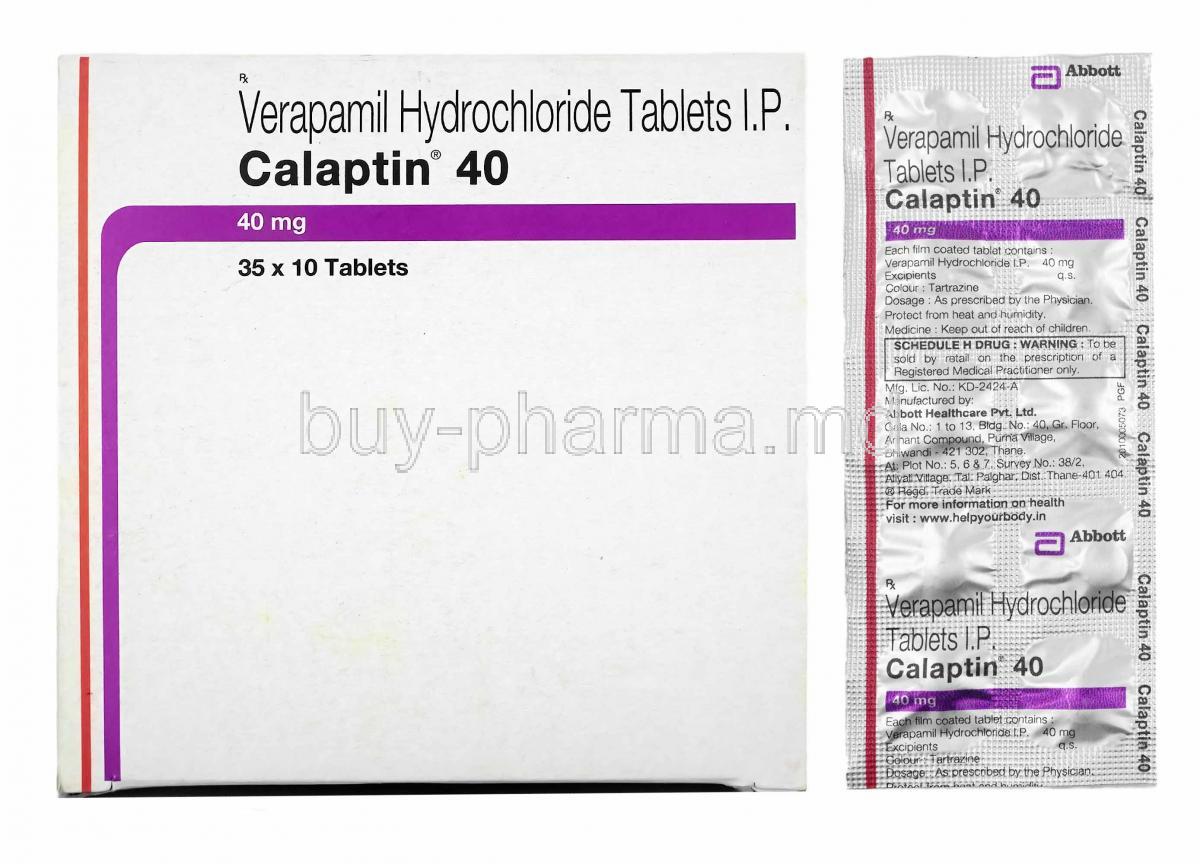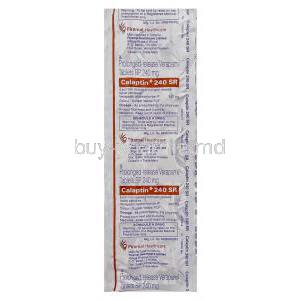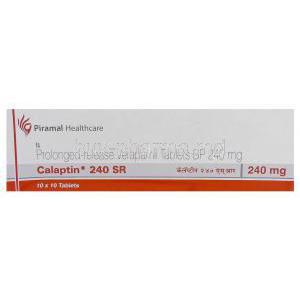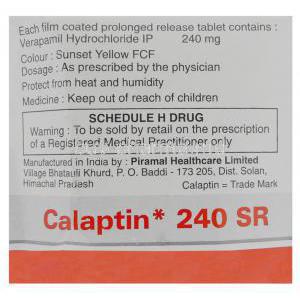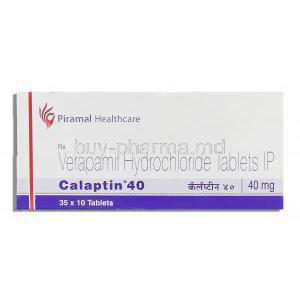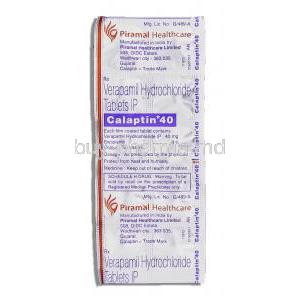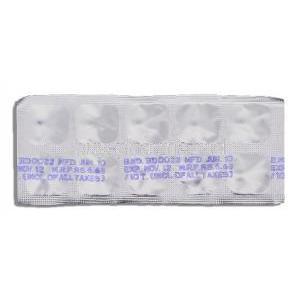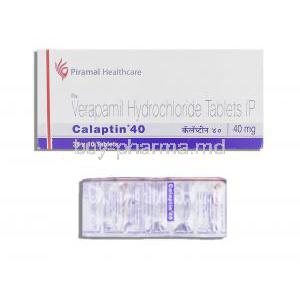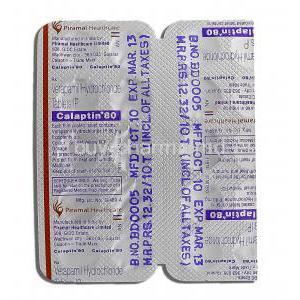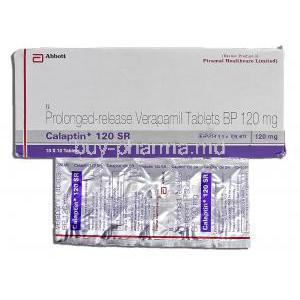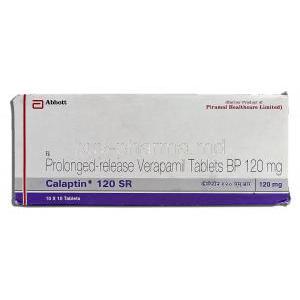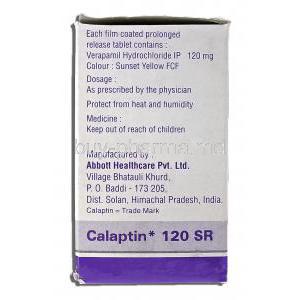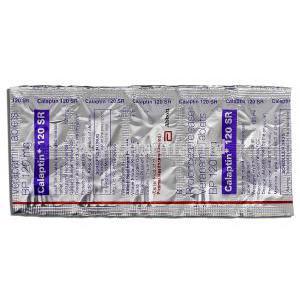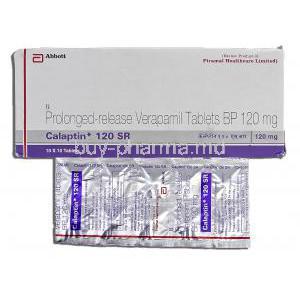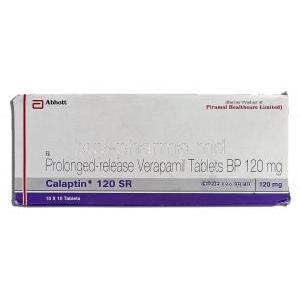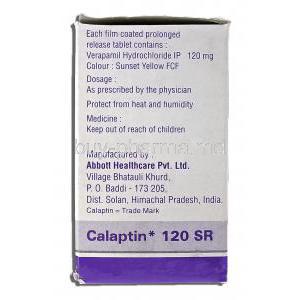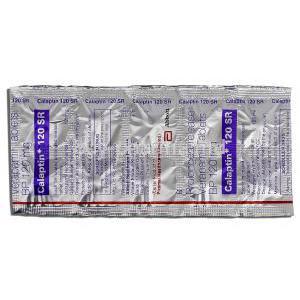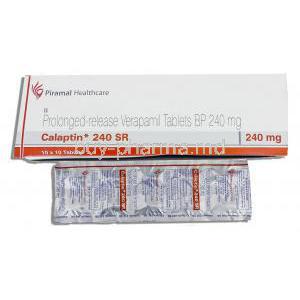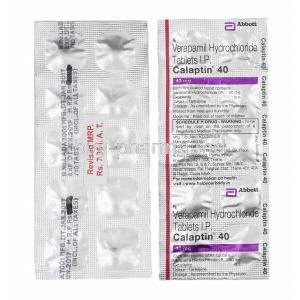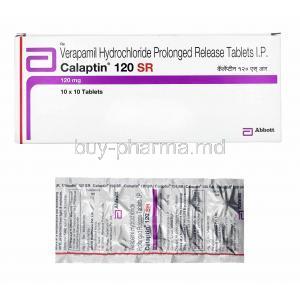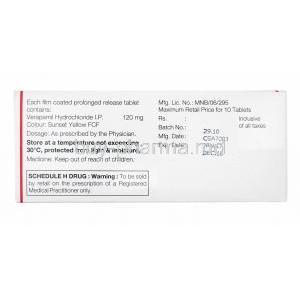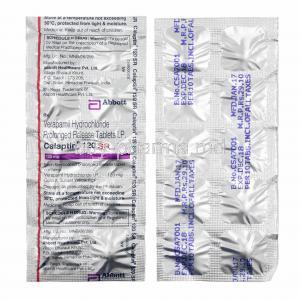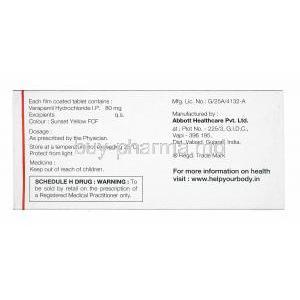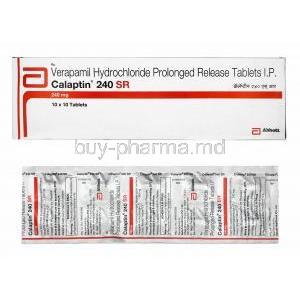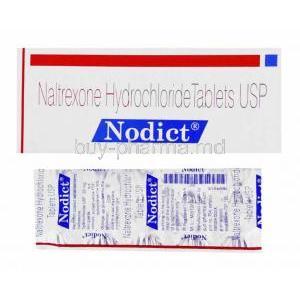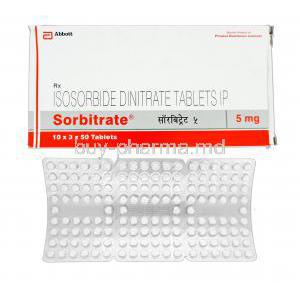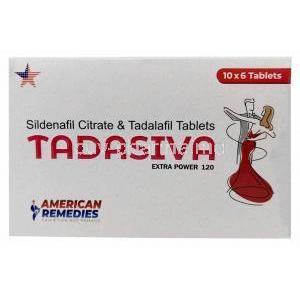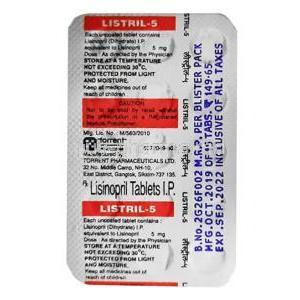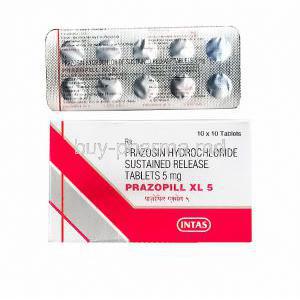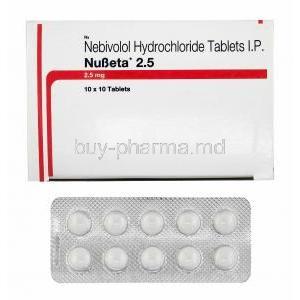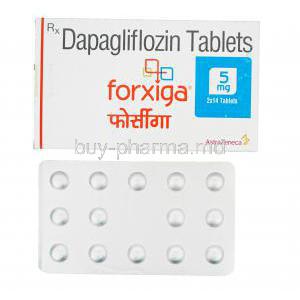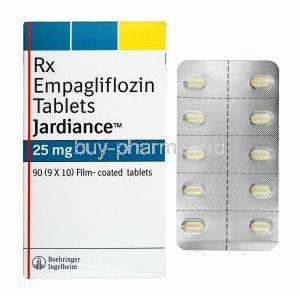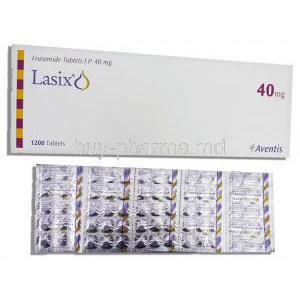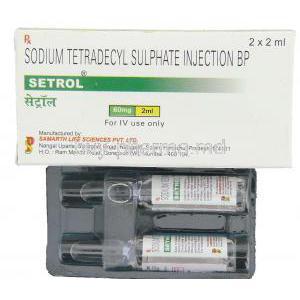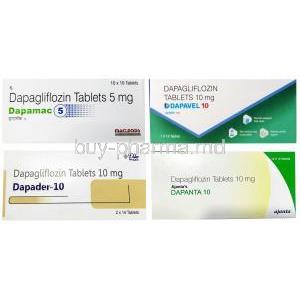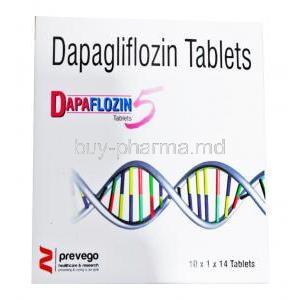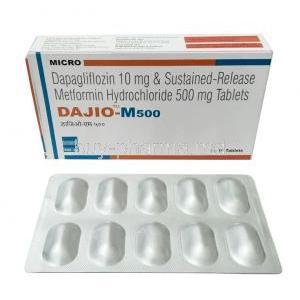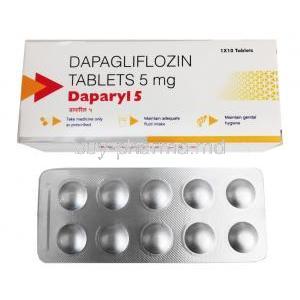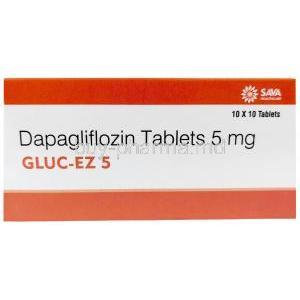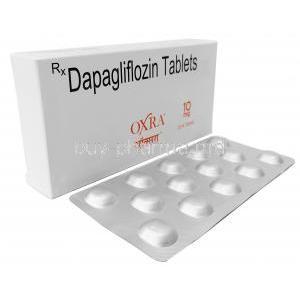Introduction to Calaptin (Verapamil)
Calaptin, containing the active ingredient verapamil, is a potent calcium channel blocker that modulates the influx of calcium ions into cardiac and vascular smooth muscle cells. This pharmacological action results in vasodilation, reduced myocardial oxygen demand, and a controlled heart rhythm. Since its introduction in the 1960s, verapamil has remained a cornerstone therapy in cardiovascular medicine.
Initially developed for angina pectoris, its therapeutic scope expanded to include hypertension and arrhythmia management. Calaptin is marketed globally under various trade names, available in multiple dosage forms to accommodate diverse patient needs, including immediate-release tablets, sustained-release formulations, and injectable preparations for acute hospital care.
Pharmacological Profile and Mechanism of Action
Calaptin exerts its effects by inhibiting L-type calcium channels, which are responsible for the transmembrane influx of calcium during depolarization. This blockade diminishes calcium entry into myocardial cells and smooth muscle tissue, leading to relaxation of coronary and systemic arteries, reduced cardiac contractility, and slowed atrioventricular (AV) nodal conduction.
- Vascular effects: Lowering peripheral resistance and improving coronary perfusion.
- Cardiac effects: Decreasing heart rate, reducing contractility, and preventing arrhythmogenic conduction.
- Extra-cardiac benefits: Alleviating certain neurological and vascular conditions unrelated to the heart.
Medical Uses of Calaptin
3.1 FDA-Approved and Primary Uses
- Management of hypertension to reduce the risk of stroke, myocardial infarction, and renal complications.
- Treatment of angina pectoris, including chronic stable and vasospastic variants, by improving oxygen delivery to the myocardium.
- Rate control in supraventricular tachycardia and atrial fibrillation/flutter.
- Prevention of recurrent episodes of supraventricular arrhythmias.
3.2 Off-Label and Emerging Uses
- Migraine prophylaxis and reduction of attack frequency.
- Cluster headache prevention in chronic and episodic forms.
- Symptomatic control in hypertrophic cardiomyopathy.
- Adjunct management in selected cases of pulmonary hypertension.
- Relief of Raynaud’s phenomenon through peripheral vasodilation.
- Supportive therapy for anxiety-related palpitations.
Dosage and Administration Guidelines
4.1 Available Formulations
- Immediate-release tablets for rapid onset.
- Sustained-release and extended-release capsules for once or twice daily dosing.
- Injectable preparations for urgent cardiovascular intervention in hospital settings.
4.2 Adult Dosing
Typical initial doses vary by indication. Hypertension often begins with 80–120 mg three times daily (immediate-release) or 180–240 mg once daily (extended-release), adjusted based on clinical response. Angina and arrhythmias follow similar dosing principles with careful titration.
4.3 Pediatric Dosing
Weight-based regimens are used, with cautious initiation and close monitoring due to limited safety data in long-term pediatric use.
4.4 Administration Instructions
Calaptin should be taken consistently with regard to meals. Sustained-release forms should be swallowed whole, not crushed or chewed, to preserve extended drug release. Adherence to prescribed timing ensures optimal therapeutic benefit.
Composition and Ingredients
The active pharmaceutical ingredient is verapamil hydrochloride. Excipients vary by manufacturer but may include microcrystalline cellulose, magnesium stearate, lactose monohydrate, and coating agents. Immediate-release and sustained-release preparations differ in excipient ratios to control absorption kinetics.
Side Effects and Safety Profile
6.1 Common Side Effects
- Constipation
- Dizziness and lightheadedness
- Fatigue
- Bradycardia
6.2 Less Common and Rare Side Effects
- Hypotension
- Peripheral edema
- Gingival hyperplasia
- Dermatologic reactions such as rashes
6.3 Serious Adverse Reactions
- Severe bradycardia or advanced AV block
- Worsening of heart failure
- Hepatic injury with elevated liver enzymes
Drug Interactions
- Enhanced risk of conduction block with beta-blockers.
- Metabolized via CYP3A4, interacting with inhibitors and inducers.
- Elevation of digoxin plasma levels.
- Contraindicated with certain antiarrhythmics like dofetilide due to proarrhythmic risk.
- Interaction with grapefruit juice increasing systemic exposure.
Warnings and Important Precautions
- Potential for severe hypotension in preload-dependent patients.
- Risk of significant conduction abnormalities—monitor ECG periodically.
- Avoid in acute myocardial infarction with pulmonary congestion.
- Use cautiously in hepatic impairment; dose adjustments may be necessary.
- Do not discontinue abruptly—gradual taper prevents rebound hypertension and arrhythmias.
Contraindications
- Severe hypotension (systolic BP <90 mmHg)
- Advanced AV block without pacemaker support
- Sick sinus syndrome without pacemaker
- Severe left ventricular dysfunction
- Known hypersensitivity to verapamil or formulation components
Careful Administration in Special Populations
10.1 Elderly Patients
In elderly patients, physiological changes such as reduced renal and hepatic function, decreased cardiac reserve, and altered body composition can significantly influence the pharmacokinetics of many medications. Calaptin may exhibit slower clearance rates in this group, leading to higher plasma concentrations and a greater likelihood of adverse effects.
- Initiate therapy with lower doses to minimize the risk of hypotension, bradycardia, and conduction disturbances.
- Conduct regular monitoring of blood pressure, heart rate, and ECG readings.
- Adjust dosage gradually based on tolerance and therapeutic response.
10.2 Pregnant Women and Nursing Mothers
Calaptin is generally assigned to a pregnancy safety category indicating that potential risks to the fetus cannot be entirely excluded. Experimental and observational data suggest that verapamil can cross the placental barrier, potentially affecting fetal cardiac conduction and vascular tone.
- Prescribe during pregnancy only if the anticipated clinical benefit justifies the possible risk to the fetus.
- Close obstetric and cardiologic supervision is recommended when used in pregnancy.
Verapamil is excreted into human breast milk in measurable quantities. While no severe adverse effects have been consistently reported in nursing infants, the possibility of reduced heart rate or hypotension warrants vigilance.
- Weigh the benefits of breastfeeding against the potential risk of infant exposure.
- Consider alternative therapies or temporary cessation of breastfeeding if high doses are required.
10.3 Pediatric Patients
The safety and efficacy of Calaptin in children have not been extensively established, particularly for long-term therapy. Pediatric patients, especially infants, may be more susceptible to hemodynamic instability due to immature cardiovascular regulatory mechanisms.
- Use weight-based dosing, with careful titration and close clinical monitoring.
- Continuous ECG surveillance is advisable during initiation, especially in hospital settings.
- Long-term use should be limited to cases where benefits clearly outweigh risks, with regular reassessment of therapy necessity.
Overdosage and Emergency Management
Overdose with Calaptin can lead to profound cardiovascular compromise, necessitating prompt recognition and intervention. The clinical presentation may vary from mild hypotension to severe cardiac arrest.
- Signs and symptoms: extreme bradycardia, atrioventricular block, marked hypotension, heart failure, confusion, and in severe cases, asystole.
- Immediate interventions: secure airway, provide supplemental oxygen, and establish intravenous access.
- Initiate continuous cardiac monitoring and prepare for advanced cardiac life support if indicated.
Decontamination measures may include gastric lavage if performed within a short time of ingestion, and administration of activated charcoal to reduce absorption. Intravenous calcium gluconate or calcium chloride can be administered to counteract the calcium channel blockade and improve myocardial contractility.
Storage and Handling Precautions
Maintaining the stability and potency of Calaptin requires adherence to appropriate storage conditions.
- Store at controlled room temperature, typically between 20°C and 25°C (68°F and 77°F).
- Protect from excessive moisture and direct light to prevent degradation.
- Keep medication in its original packaging until use to safeguard against environmental exposure.
Unused or expired medication should be disposed of safely to prevent accidental ingestion or environmental contamination. Follow local pharmaceutical disposal regulations, and avoid discarding into household waste or wastewater systems.

